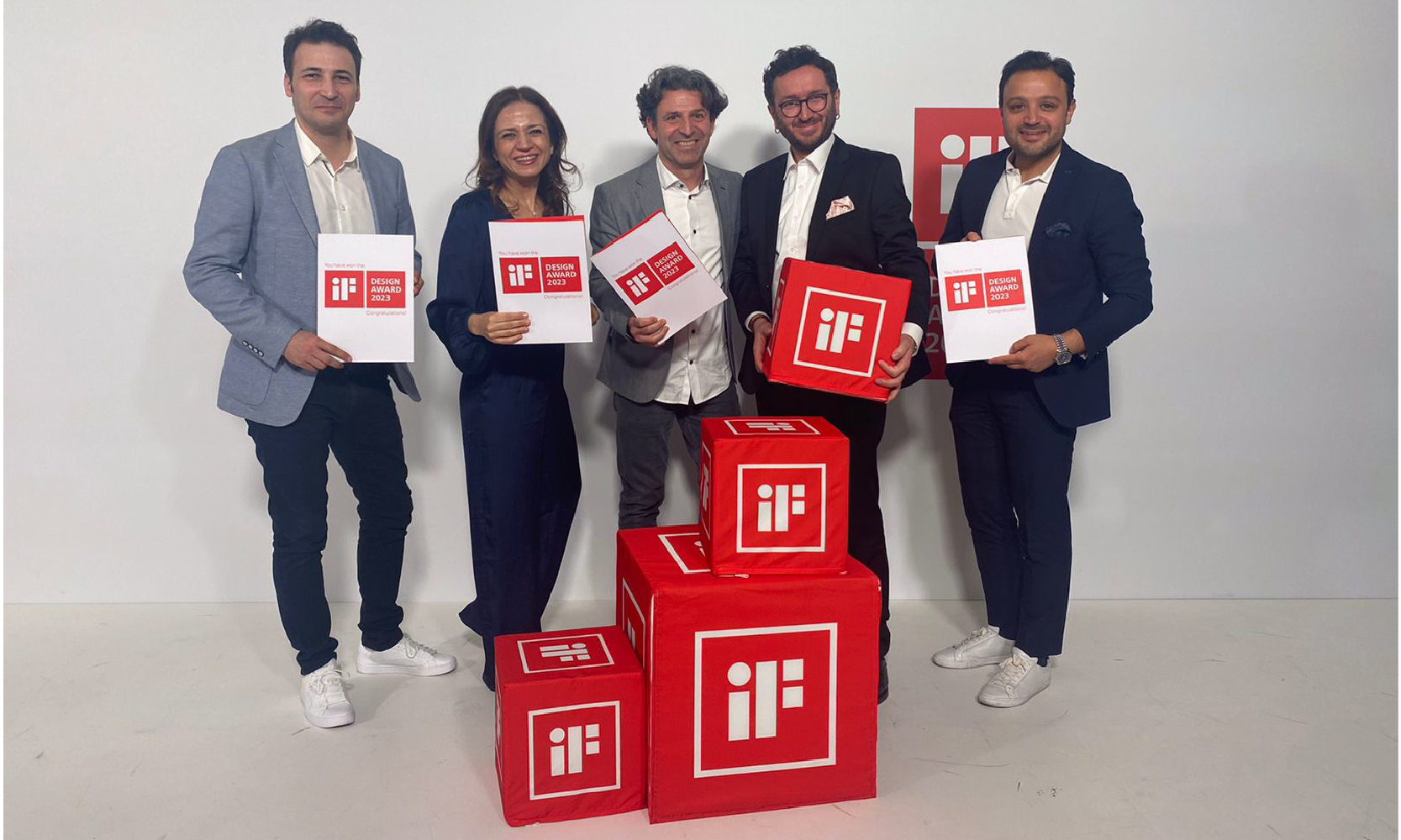One of the essentials for a creative professional is to have a stunning design portfolio.
The portfolio is primarily your ambassador and stands as a document that proves that you can design. It is an interface for a businessperson to meet with you in the midst of their busy agenda with deadlines, problems waiting to be solved, upcoming projects, team coordination, and hundreds of other portfolios. A great portfolio is probably the only opportunity you have for an effective first impression. So, your portfolio is actually an intuitive first meeting, and a journey where you describe your personal creation process.
How to Create a Stunning Design Portfolio
From this perspective, you may realize that a portfolio in your job application is not the right place to explain all the work you have done so far with all the details. The purpose of the portfolio is to express who you are, what you can do, and what your vision is. However, it is also important to present your prominent features and how you are different from others, since these are the expected minimums and everyone would already express them.
What the portfolio needs to accomplish is to create a perception of how you are, and to arouse curiosity to enter next stage and meet physically. If your portfolio makes others say, “What kind of person is this? We should meet with this person in our office”, then it has reached its goal. In the light of this, you can choose what you should or should not include for the target more appropriately.

Understanding what a portfolio actually is – and what it is not- before you start helps you create a better portfolio.
How to Create a Portfolio
To get successful results, consider preparing a portfolio wholly, as a design project. First of all, it is necessary to understand the target audience. The setups would change depending on the position and the company you apply for. Completing the portfolio once as preliminary and then going over it again, and making corrections with feedbacks allow you to create a portfolio that reaches the goal. Only add the projects you think are stunning and effective. Do not add redundant details such as projects, pictures, sketches, etc. to fill the page.
1- Start Strong
Start your portfolio with a remarkable project and end with another stunning project, sketch, model, photo, etc. that would make people want to see more. Instead of preparing a standard portfolio and sending the same presentation everywhere, sending customized portfolios to workplaces is better. This means that you have a good grasp of the work and workplace as well as have the appropriate qualifications. It is also a more effective start for mutual communication.
Before creating its variations, prepare a comprehensive portfolio where you have all your work and say everything you want to say. Let this be a resource for yourself. You can also choose to share this archive in an online platform like Behance. Then, depending on the job you are going to apply, you can easily create a customized portfolio by selecting projects from this archive that indicate that you have the qualities the company looks for, and eliminate less relevant items.
2- Let Your Projects Describe Themselves
For example, a design agency you apply for may be focusing on medical products. They might also be designing products such as furniture, packaging, machinery, or designing fairs, interiors, stands. In your portfolio, it is necessary to present your experience and interest in that field first. If you keep in mind what qualities the person evaluating your application is looking for, how you should prepare your presentation will become clear.

The position you are applying for may vary. It may be industrial design, UX / UI design, service design, design management or design research. Even if a project in your portfolio touches on all these elements, it would be meaningful to emphasize the relevant stage of the project and to emphasize it by giving more space according to the position you apply for.
The same job position may be considered with different priorities in two different companies. You can recognize this by looking at how that company presents itself. While some place gives more importance to the sketch and form research part of the process, other places may give more importance to design research and conceptual design. SMEs, on the other hand, may examine projects only with a focus on results. Other places may question technical producibility. Remember that everyone will be impressed by a great design process presented with their stories. In other words, having a foot in both camps is important for creating an impression.
3- Explain Simply
Avoid over-embellishing your projects. Let your designs talk for you by facilitating the way to see the projects in a large format. Regardless of its kind, explaining the project comprehensively with all its stages in the presentation sheet describes the project better. The story of the project is always valuable. It also shows how all the phases, such as research, concept sketches, use scenarios, and the final product, are related to one another. Giving sufficient time to the project process enriches the presentation. Particularly, including sketches and the reasons behind design decisions draw attention.
However, you should avoid showing everything all at once or have dense or excessive layouts. Of course, the part that needs to have largest area should be related to what the companies you send your portfolio look for. At the same time, no matter how important the process is, the final product must appear in the presentation, and must be clear and understandable.
Besides, quality is more important than quantity. It is a better choice not to present any project or visuals that will lower the average of the portfolio for a distinctive positive impression. Even only 3 projects are enough. You can describe your best project in the first few pages, and then summarize the remaining projects.
4- What Your Portfolio Says About You
Remember that the people who will review your portfolio do not know you. Only this visual communication tool can talk about you, and it has the power to convey a lot of information. If you want to look controlled, you must be clear about which message you want to convey. Ask yourself for each project you choose: “Which part of myself do I want to be understood with this?”. Also, ask this for every image you put in a project sheet: “Which distinguishing feature in my skills do I want to emphasize with this?”. For this, it is useful to analyze the aspects that you think are better than others, and that will make you stand out and be chosen. Without exaggerating, draw attention to the points that you are proud of and emphasize your achievements. Explain well the values you have added to projects. Include striking little touches that reveal this if you have a different perspective.
5- Show, Don’t Tell
Every detail in your portfolio tells something about you, whether it’s your attention to detail or neglect. If you become aware of this, you get the power to use it to convey the message you want to deliver. Even the gaps you leave and the layout you create will tell you about your skills and characteristics. While the way you use a title or line can make a strong impression, embellishments that do not serve a purpose in the narrative can have a negative effect as a distraction. Note that reviewing a portfolio is also an experience, and make sure to design the experience as plain and smooth as possible.
If you reflect your success in your business to the way you prepare the portfolio, you can manage to show yourself instead of explaining yourself. This is an intriguing approach and makes sure that your portfolio stands out. For example, when applying to a packaging design firm, submitting your CV as a creative packaging design can make a more memorable impression than a portfolio. Of course, for the sake of being impressive, a dazzling presentation that does not express neither your work nor you well enough, overbalances. The important thing is to find the right tune.
6- Feedback is Important, Be Open to Criticism!
Once you have completed the initial version of your portfolio, take a step back. Then, review it through the eyes of the person who will examine it. What impression does it give to someone who never knows about you, and is it enough to stand out from the rest? After the necessary arrangements, show your portfolio to someone who has no professional relationship with design in the second stage. As someone who does not know the details of projects, their feedback is important to understand what is understood from your portfolio and what questions come to mind.
What you will understand here is whether the things you want to convey reaches across or not. And if there is a misunderstanding, how should you add a description to fix it? One of the success criteria of your portfolio is that everyone, interested or uninterested, should understand the project correctly from the presentation. Unless you apply directly to a design agency, the person who will evaluate your portfolio will probably not be from the design discipline. In possible, you can ask for feedback if you have acquaintances in the industry you will apply to, or from trainers. Their comments will be very useful in perfecting your portfolio.
7- Technical Details That Can Give You Away
Some technical details are equally important as the creative elements that need attention. If you are sending a long portfolio, you can facilitate the flow by putting an index after your CV. Make sure that the CV you submit is not too large. However, when you reduce the size, it is also important not to reduce the visual quality too much. If you are sending a 25 MB CV with only your photo as a visual, no one will even look inside.
You should pay attention to the balance between writing and visuals. A predominantly visual expression should only be supported with writing where necessary. There should be no typographical errors and attention should be paid to the layout.
The picture in the CV should be genuine and serious. So, not having a selfie will create a more professional impression. If we talk about the portfolio as a whole, a sincere approach that gives information about your personal style with details not disturbing the seriousness can be interesting. For example, an image with coffee on the end page from a designer who loves the drink can give an idea about the designer. Learning about one’s job as well as something more intimate about the person is a pleasant detail in creating a catchy impression.
It is important to include your contact information in the portfolio. In most cases, companies archive files that can be returned as needed on computers. In this case, it will not be possible for them to find your e-mail to contact you back. Therefore, your contact information must be in the file you sent.
As we mentioned in the beginning, it is necessary to see preparing a portfolio as a design project. In other words, it is natural for the portfolio to go through stages such as the prototype, feedback, iteration, and then come to its final form with corrections. And it all starts with research. In other words, it will be a good starting point to research great and creative CV samples from foreign sources and design platforms.
 Primitive Use of Artificial Intelligence: A Look from Past to Present
Primitive Use of Artificial Intelligence: A Look from Past to Present  The Future of Medical Design
The Future of Medical Design  A Night Full of Prizes: Celebrating 4 Wins at iF Design Awards 2023
A Night Full of Prizes: Celebrating 4 Wins at iF Design Awards 2023